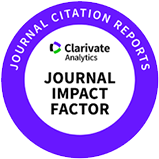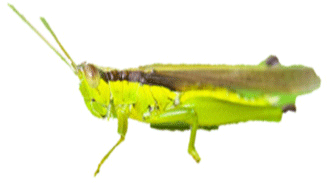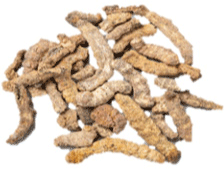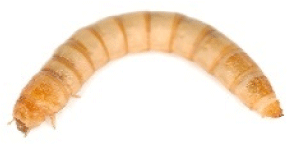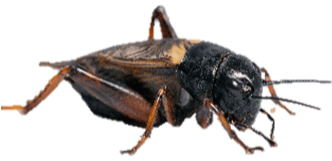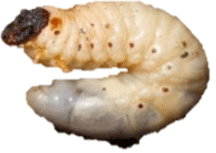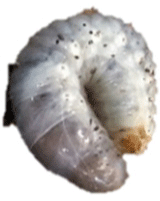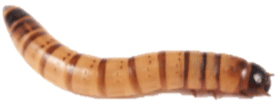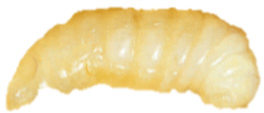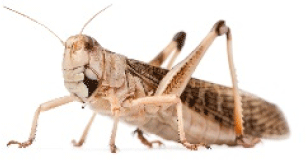Introduction
Insects have long been part of the human diet, but they have gained more attention as a major protein source in recent years. They are considered a viable alternative to conventional livestock products such as beef, pork, and chicken. Other emerging protein sources include plants, edible insects, cultured meat, mycoproteins, and algae (De Angelis et al., 2024; Lee et al., 2024; Sun et al., 2021). Plant-based proteins account for $9.1 billion, or 62.2% of the global alternative protein market (Market.us, 2023). However, insect proteins are gaining attention for their potential to address the nutritional limitations of plant-based protein products. Insect proteins are rich in essential amino acids, particularly lysine and threonine, which are essential for human health. They offer high biological value and are expected to complement plant-based protein products (Rumpold and Schlüter, 2013).
Compared to conventional livestock farming, insect production has a relatively low environmental influence, higher efficiency, and fewer ethical concerns related to animal welfare. Consequently, various insect-based products are being developed, attracting investments and driving rapid market growth (Mancini et al., 2019). The global edible insect market was valued at approximately USD 1.6 billion in 2024. Projections estimate growth to reach approximately USD 6.2 billion by 2032, with a compound annual growth rate (CAGR) of 16.15% (IMARC Group, 2024). However, the commercialization of insect protein products remains limited. This is primarily due to the lack of consumer acceptance of insect ingredients and the inability of the products to match the taste, flavor, and texture of traditional livestock products. Therefore, this review aims to investigate the characteristics of insect-based materials, the current state of research, and market trends to project the future of the insect protein industry.
Definition and Historical Background of Edible Insects
Edible insects are insects consumed directly as human food and edible resources for livestock feeds (Yoon, 2017). The FAO report “Edible insect: Future prospects for food and feed security” highlights that approximately 2 billion people worldwide consume insects daily, with >1,900 species considered edible. The consumption of edible insects dates back to ancient Greece and Rome, where Aristotle and Pliny documented insect consumption (Ramos-Elorduy, 2009). In China and Thailand, insects have been a significant food resource for >2,000 years and are widely used in traditional medicine (Hanboonsong et al., 2013). In sub-Saharan Africa, insects have long served as a crucial source of nutrition in traditional diets for centuries (Kelemu et al., 2015). During the 19th and 20th centuries, insect consumption gradually declined in Western societies but has regained attention in the modern era due to its environmental sustainability and nutritional benefits (van Huis, 2013). Edible insects are recognized as a sustainable food resource with high nutritional value, offering high protein content, essential amino acids, fatty acids, and minerals. Their low greenhouse gas emissions and high resource efficiency, including water and feed, make them a viable alternative to conventional livestock protein (Oonincx and de Boer, 2012; van Huis et al., 2013). In recent years, the industrialization of edible insects has advanced in Europe and North America, with products available to consumers in various forms (powders and snacks, among others; Gahukar, 2011). These developments highlight the potential of insect-based products as a solution to future food security challenges (Rumpold and Schlüter, 2013).
Factors Affecting Insect Consumption
As edible insects emerge as sustainable alternative protein sources, hurdles on insect consumption, regardless of its form, remain to be a problem. Some of the factors that influence insect consumption are cultural perceptions/food neophobia, sensory characteristics, health and environmental benefits, and demographic factors (Ros-Baró et al., 2022). Regions in Africa, Asia, and Latin America tend to be more receptive towards the concept of insect consumption in contrast to western societies (Abro et al., 2025; Ros-Baró et al., 2022). This is mostly because these regions already practice entomophagy prior to its sensationalism. Sensory attributes also play a huge role in edible insect-based products with high preference towards processed insects (e.g., flour, powder) rather than whole insects (Alhujaili et al., 2023; Ros-Baró et al., 2022). On the other hand, promoting the nutritional and environmental impact of insect consumption can enhance their consumer acceptability. This is evident among European regions increasing willingness to consume insect-based products given the promise of high protein content and low environmental footprint (IPIFF, 2024). In western Kenya, nutritional and health benefits were treated as significant determinants toward entomophagy (Owidi et al., 2025). Another consideration is the demographic factors (e.g., age, gender, socioeconomic status) which is evident in a survey which showed that European individuals, aged 25–44, have higher preference towards insect-enriched products (IPIFF, 2024). Meanwhile, Mediterranean men and individuals, aged 40–59, showed greater willingness towards insect consumption.
In order to improve insect consumption across the globe, numerous strategies can be employed to aid in the transition towards alternative protein sources. Product innovation is still needed to improve sensory characteristics. This can be in the form of a new product or as an additive to popular food products (e.g., bread, pasta/noodles, chips; Ros-Baró et al., 2022). This food enrichment strategy could eventually lead to the improved acceptability of insect-based food in general. Another strategy is via educational campaigns to highlight the benefits of insect consumption, specifically on its sustainability, nutritional benefits, and functionality. This can help combat food neophobia to improve consumer perception. Additionally, regulatory support can fast-track insect-based food commercialization by providing regulations and safety standards. This can facilitate market growth and the improvement of product safety and perception (Alhujaili et al., 2023).
Global Edible Insect Market Trends and Future Outlook
The global edible insect market is growing rapidly as interest in sustainable food resources grows. Edible insects are increasingly recognized as an alternative protein source owing to their nutritional value and low environmental influence. Demand is steadily rising, particularly in Asia, Africa, and Latin America, where insect consumption has long been part of traditional diets (van Huis et al., 2013). Since the early 2010s, the edible insect market has gained traction in the West, including North America and Europe. This is primarily driven by environmental sustainability, food security concerns, and demand for healthy protein sources (Gahukar, 2011). In recent years, insect-based products have seen rapid market expansion driven by increased investment and product development (Mancini et al., 2019). Edible insects are now processed into various forms, such as protein bars, snacks, and powders, broadening consumer options and particularly appealing to younger demographics (Verbeke, 2015).
The global edible insect market was valued at approximately USD 1.6 billion in 2024 and it is expected to reach approximately USD 6.2 billion by 2032 at a CAGR of 16.15% (IMARC Group, 2024). North America is expected to hold the largest market share of 28.8% in 2024, with the United States leading the region. High-protein insect-based products, such as protein bars, crackers, and powders, are gaining attention (Caparros Megido et al., 2014; IMARC Group, 2024). Particularly, crickets are a major driver of the USA insect market growth due to their high protein content and resource-efficient rearing methods (IMARC Group, 2024). In Europe, the approval of insects as food by the European Food Safety Authority (EFSA) in 2021 improved market access, marking a crucial milestone in the development of the edible insect industry (EFSA Panel on Nutrition et al., 2021).
The growth of the edible insect market is further driven by various marketing strategies and technological innovations. Processing methods such as 3D printing are enhancing the usage of insect proteins transforming food production (van Huis et al., 2013). Emerging technological approaches play a crucial role in incorporating insects into food ingredients and developing new products (Gahukar, 2011).
Research is ongoing to harness the nutritional benefits and functional properties of insects for alternative protein production. Hasnan et al. (2023) demonstrated that insect proteins and peptides exhibit advantageous functional properties—emulsification, foaming, gelation, and water retention, compared to conventional protein sources. These properties underscore the need for further exploration. Future market growth will be driven by advancements in insect rearing and processing technologies, regulatory easing, and changing consumer perceptions. Additionally, the incorporation of insect proteins into alternative proteins to develop new products is expected to drive further market expansion (van Huis, 2020). However, the current insect protein market remains indistinguishable from historical food products consumed by humans. Modern insect-based foods primarily involve replacing conventional ingredients (meat, protein products, sweets, noodles, among others.) with insect-derived materials. Therefore, distinguishing between traditional insect foods and substitute foods using insect-derived materials is necessary.
Types of Edible Insects Consumed Worldwide
Edible insect consumption has been an integral part of a variety of cultures for years. To date, over 1,900 species of edible insects have been identified, with Asia, Africa, and Latin America traditionally incorporating them into their diets (van Huis et al., 2013).
Grasshoppers and crickets are the most widely consumed species in Asia, Africa, and the Middle East, valued for their high protein content and essential amino acid composition (Rumpold and Schlüter, 2013). Crickets are widely consumed in Thailand and Cambodia, where they are often fried or roasted as high-protein snacks. Their protein content is approximately 60%–70% on a dry weight basis. Furthermore, they are rich in minerals such as calcium and iron, enhancing their nutritional value (Bukkens, 2005; Payne et al., 2016; Rumpold and Schlüter, 2013). These characteristics make crickets both a traditionally popular food and a sustainable modern protein source (van Huis et al., 2013).
Beetles are a high-protein food primarily consumed in Europe and Asia, where they are dried or processed into powder and added to bread, pasta, and snacks, among others (van Huis et al., 2013). Brown mealworms (Tenebrio molitor) are the most widely consumed edible insect globally, containing approximately 47%–60% protein on a dry weight basis, and are rich in fats and minerals, offering a broad range of nutrients (Rumpold and Schlüter, 2013). Beetles provide essential micronutrients, including zinc, iron, and B vitamins, enhancing the nutritional value of foods (van Huis et al., 2013).
Bees and ants are consumed worldwide in various forms. Honey bee larvae and pupae, with a protein content of approximately 45%–65% dry weight, are rich in vitamins and minerals and they are used as culinary ingredients and snacks in Asia and parts of Africa (Gahukar, 2011). In Latin America, ants are fried or coated in chocolate, offering a unique acidic flavor (van Huis et al., 2013). Bees and ants are also nutritionally valuable, they contain polyphenols and antioxidants with potential health benefits (Paoletti, 2005).
Butterfly and moth larvae, particularly bamboo worms, are popular foods in Asia. They are consumed as nutritious snacks or meal replacements, with a protein content of approximately 50%–60% on a dry weight basis and rich in iron and zinc (Hanboonsong et al., 2013). Butterfly larvae contain approximately 53%–63% protein on a dry weight basis, which are characterized by high fat and mineral content (Bukkens, 2005). In Africa, mopane caterpillars are dried, stored, or cooked for various dishes and are a major protein source for local people (Ramos-Elorduy, 2009).
Insect consumption varies by region, reflecting distinct cultural and dietary traditions. In Korea, 10 insect species are officially recognized as edible by the Ministry of Agriculture, Food and Rural Affairs and the Korea Food and Drug Safety Administration. As of 2024, seven edible insects are recognized as food ingredients in Korea—rice grasshopper, silkworm, white river dragonfly, brown mealworm larvae, two-spotted cricket (Gryllus bimaculatus), longevity scarab larvae, and white-spotted flower chafer larvae (Protaetia brevitarsis). Additionally, three species—American king leech, bee pupa, and grasshopper beetle are temporarily approved food ingredients and are undergoing further safety and functionality evaluations through research and commercial testing (Table 1).
Data from MFDS (2021).
In Korea, edible insects are primarily processed into powder form and incorporated into various products such as snacks, energy bars, functional foods, and patient meals (Cho et al., 2022). Additionally, insect proteins are gaining attention as an alternative to traditional meat proteins, with advancements in processing and enhancing taste and texture. Additionally, research on their nutritional value and safety is actively progressing. Research on protein isolation and purification of edible insects, such as brown mealworms, is enhancing the utilization of insect protein and expanding its potential as a food ingredient (Rumpold and Schlüter, 2013). Beyond serving as a protein source, edible insects are also being investigated for their functional properties, such as antioxidant, anti-inflammatory, and immune-boosting effects. For instance, white-spotted flower chafer larvae exhibit immune-boosting and antioxidant properties, making them a potential ingredient for functional health foods (Kim et al., 2024). Additionally, the water retention and emulsifying properties of insect proteins are being explored for applications in meat substitutes (Kim et al., 2021).
The edible insect industry in Korea is gradually expanding but it faces challenges, including negative consumer perceptions and limited regulatory limitations. Improving product taste and aroma, alongside accumulating scientific evidence on safety and nutritional value, is crucial for broader adoption and industrial growth in the future. Additionally, deregulation and quality standardization are emerging as crucial issues for competitiveness in the global market (Kim et al., 2021).
Nutritional Value of Edible Insects
Edible insects are recognized globally as alternative protein sources with high nutritional value (Table 2). They are rich in essential nutrients, particularly proteins, fats, vitamins, and minerals, which can be beneficial for human health (Rumpold and Schlüter, 2013). Insects contain 35%–77% protein on a dry weight basis, which is higher than that of traditional animal protein sources (Bukkens, 2005). Grasshoppers and crickets provide approximately 60%–70% protein, which is higher than that of beef or pork (Bukkens, 2005). Insect proteins also contain all essential amino acids, making them useful for balancing nutrition (Payne et al., 2016).
Since the body cannot synthesize essential amino acids, they must be obtained from food, and insect proteins contain all essential amino acids (Rumpold and Schlüter, 2013). Their amino acid composition is similar to that of animal proteins, with particularly high levels of leucine, lysine, threonine, and valine. Edible insects, such as crickets and brown mealworms, contain 55%–75% protein on a dry weight basis, with a high percentage of essential amino acids that support muscle growth and protein synthesis (Bukkens, 2005; Ghosh et al., 2017). Insect protein can also supplement amino acids lacking in some plant-based proteins, making it a valuable nutrition option for vegetarians and those seeking protein alternatives (Finke, 2013). Brown mealworms are rich in essential amino acids leucine, phenylalanine, and threonine, which are crucial for muscle development and repair (Yi et al., 2013). Rice grasshoppers are rich in lysine, which is often deficient in vegetarian diets (Rumpold and Schlüter, 2013). Insects are also rich in conditionally essential amino acids such as arginine, making them a valuable protein source for growing children and recovering patients (van Huis et al., 2013). Furthermore, insect protein has high digestibility and biological value, ensuring efficient absorption and utilization by the body (Jongema, 2017).
Insect fatty acid composition varies, with brown mealworm larvae containing 20%–30% fat, primarily unsaturated fatty acids such as oleic and linoleic acids (Rumpold and Schlüter, 2013). Therefore, fatty acids from insects can have a positive influence on cardiovascular health and they are considered a healthier alternative to conventional animal fats (van Huis et al., 2013).
Insects are also rich in vitamins and minerals. Two-spotted crickets are rich in B vitamins, including vitamin B12 and riboflavin, alongside high amounts of essential minerals such as iron, calcium, and zinc (Finke, 2013). Some larvae contain 31–77 mg of iron per 100 g dry weight, exceeding that of most meats (Bukkens, 2005).
| No. | Scientific name | Protein content (%) | Fat content (%) | Ash content (%) | Carbohydrate content (%) | Moisture content (%) | References |
|---|---|---|---|---|---|---|---|
| 1 | Oxya japonica thunberg | 76.77 | 9.02 | 4.10 | 7.57 | 2.54 | Hyun (2010) |
| 2 | Bombyx mori | 57.68 | 9.54 | 9.33 | ND | 4.72 | Kweon et al. (2019) |
| 3 | Bombyx batryticatus | 43.9–74.3 | ND | ND | ND | ND | Hu et al. (2017) |
| 4 | Tenebrio molitor | 50.32 | 33.70 | 3.73 | 9.32 | 2.90 | Baek et al. (2017) |
| 5 | Gryllus bimaculatus | 61.05 | 19.08 | 4.41 | 11.60 | 3.86 | Kim et al. (2020) |
| 6 | Allomyrina dichotoa | 39.31 | 25.21 | 5.26 | 28.61 | 1.63 | Baek et al. (2017) |
| 7 | Protaetia brevitarsis | 57.86 | 16.57 | 8.36 | 10.56 | 6.66 | Baek et al. (2017) |
| 8 | Zophobas morio | 46.80 | 43.64 | 8.17 | 1.39 | ND | Araújo et al. (2019) |
| 9 | Apis mellifera | 21.00 | 12.30 | 2.20 | ND | 3.82 | Banjo et al. (2006) |
| 10 | Locusta migratoria | 50.42 | 19.62 | 6.24 | 20.43 | 3.81 | Mohamed (2015) |
Application to Insect-Based Alternative Protein Products
Based on a market survey of insect-based products, cricket-derived products are the most prevalent, including cricket protein bars, pasta, capsules, tacos, bread, and chips (Table 3). Mealworms and grasshoppers are also commonly used in insect-based food products. Currently, the majority of insect-based products on the market are designed to replace traditional food ingredients with insect-based components rather than creating entirely new products developed from insect proteins or ingredients. To successfully replace an ingredient in a widely used product with insect protein, the alternative must closely match the taste, flavor, or texture of the original product. However, we believe that one of the primary reasons the insect protein food market has not experienced significant growth is that their taste and flavor do not compare favorably to that of conventional products. Our research shows that meat substitutes made from insect protein are relatively scarce, primarily attributed to their inferior taste, flavor, or texture compared to that of traditional livestock products. While many studies suggest that negative consumer perceptions of insect proteins pose a major barrier to market growth, the insect protein market is expected to expand significantly if the taste and flavor match or surpass those of traditional livestock products.
| Companies | Contents | Commercial products | References |
|---|---|---|---|
| BeCrickets | - BeCrickets aims to transform dietary habits to achieve a healthy and sustainable lifestyle through the consumption of nutritious, innovative, and delicious cricket protein-based foods. - Sabor Chocolate Mexicano features organic cocoa sourced from Southeast Mexico and combined with a touch of natural cinnamon to evoke rich, authentic chocolate flavors. Each three-tablespoon serving provides 18 g of protein, is low in carbohydrates, and contains no added sugars. - With its rich chocolate flavor, this product serves as a versatile option for breakfast, a light snack, an afternoon treat, or a pre- or post-workout protein supplement. |
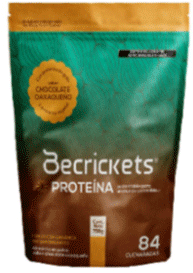 <BeCrickets Proteína de Grillo+vegetal sabor chocolate> 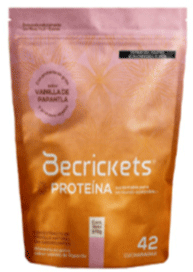 <BeCrickets Proteína de Grillo+vegetal sabor vainilla> |
BeCrickets (2022) |
| Beetles Beer | - Beetles Beer originates from Belgium, a country renowned for brewing the finest beers. In 2016, scientist Patrick Fiore and students from the University of Leuven developed an innovative drying machine initially designed to dry hops for beer production. | 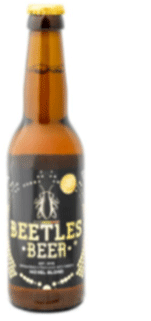 <Beetles beer novel blond> |
Beetles Beer (2024) |
| Bugsking | - Bugsking was founded to drive innovations in the insect industry by implementing a social business model that supports agriculture and rural communities, including employee welfare, regional social contribution, and job creation. - This product of the company includes mealworms, which contain twice the protein per gram compared to that of pork and contain the same protein content as beef. Additionally, mealworms are rich in essential nutrients, including iron, making them a widely recognized alternative food source. |
 <Insect protein disease>  <Mealworm brownie> |
Bugsking (2022) |
| Chirps | - Chirps aims to encourage bug consumption by educating consumers that bugs are not only delicious and nutritious but also sustainable. - Their chips are made from a blend of corn, soy, chia seeds, and cricket flour and are offered in three flavors: sea salt, cheddar cheese, and barbecue. |
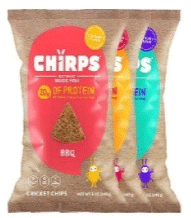 <Chirps cricket chips> |
Chirps (2017) |
| Don Bugito | - Don Bugito—the Prehispanic Snackeria—is a Bay Area-based company founded in 2011, committed to offering eco-friendly, high-protein snacks made from delicious edible insects inspired by Mexican Prehispanic cuisine, Native American ingredients, and the cultural heritage of the founder. - While growing up in Mexico, the founder was exposed to culturally rich traditions of eating edible insects and their use as "power foods." |
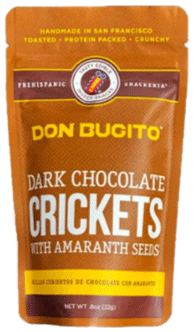 <Chocolate covered crickets with amaranth seeds> |
Don Bugito (2018) |
| Entomos | - Founded in 2009, Entomos became the first authorized producer of edible insects in Switzerland in 2017. With >25 years of expertise, the company collaborates with local and European partners to ensure sustainable production. Through its commitment to innovation and nutrition, Entomos advances the development of the edible insect industry. - Entomos protein pasta, enriched with Acheta domesticus crickets, offers a nutrient-dense option for individuals seeking to enhance their daily protein intake. With 19.6 g of protein per 100 g serving, a 200 g portion provides 39.2 g of high-quality protein. Comprising 85% durum wheat semolina and 17% dried crickets, this pasta combines sustainability with superior nutritional benefits. |
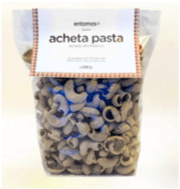 <Pasta protein with crickets> 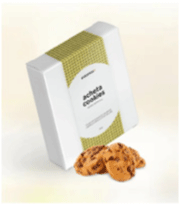 <Chocolate cookies with crickets> |
Entomos (2025) |
| EntoSus | - Florian Berendt, the founder of EntoSus, has worked as a consultant and speaker in the organic sector since 2019, specializing in insects as an alternative protein source for animal feed. In mid-2019, he began developing EntoSus, a company dedicated to transforming sustainable protein production. In 2020, EntoSus GmbH was officially established with the mission of contributing to a more environmentally sustainable future. - They offer various products, including spreads, cricket-based chocolates, minced meat, and bread kits for making burgers, providing consumers with a tasty and enjoyable way to incorporate insects into their diet. - Their insect-based products are available for purchase through their online store or in affiliated supermarkets and organic stores across Germany. |
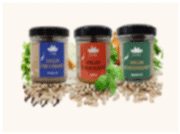 <Spread trio: Paprika, farmer's style, palatinate style> 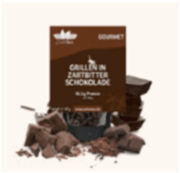 <Crispy crickets in Belgian dark chocolate> 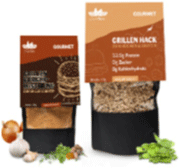 <Grilling mince and grilling burger mix> |
EntoSus (2024) |
| Essento | - Essento, a Swiss brand, has rapidly achieved significant milestones by introducing insect-based food products across Europe. Their brand aims to promote a diverse and nutritious diet, leveraging the high protein content and numerous health benefits of insects. To overcome cultural biases against edible insects, Essento emphasizes modern, clean packaging and invests in public education to highlight the advantages of insect consumption. - The berry almond protein bar contains 13% A. domesticus (house cricket) powder sourced from the EU, along with cocoa powder 13%, cocoa butter 13%, sultanas, cocoa nibs 8%, psyllium husk fiber, and natural flavoring. - Many of their products include mealworms such as insect protein balls, which are naturally rich in animal proteins and provide a high concentration of essential amino acids that the body needs and can efficiently utilize compared to that of plant proteins. |
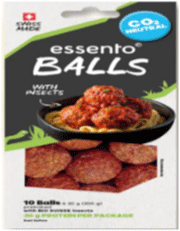 <Insect protein balls mealworms>  <Berry almond protein bar> |
Essento (2025); Swissmadedirect (2025) |
| Fit Cricket | - Fit Cricket protein bars utilize A. domesticus cricket protein, a rich source of essential nutrients such as B12, iron, and omega fatty acids, delivering 10 g of protein per bar. As a sustainable and eco-friendly protein option, crickets require significantly fewer resources than those of traditional livestock, making them a responsible choice for personal health and environmental sustainability. - The apple pie protein bar incorporates naturally sourced, nutritious, and sustainable ingredients. Its key components include date paste, cricket flour, honey, sunflower seed butter, and hemp hearts, blended with dried apples, ground cinnamon, and organic vanilla for a wholesome flavor. |
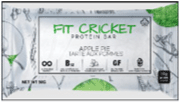 <Apple pie protein bar> 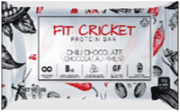 <Chili chocolate protein bar> |
Fit Cricket (2025) |
| Grillon Le Pain Crickbread | - Globe Protein aims to provide sustainable, healthy, and delicious products that seamlessly integrate nutrients from cricket powder into daily meals. - The concept of integrating insects into everyday food led to incorporating cricket powder into bread, a staple consumed by most of the Western population. - Insect protein bread contains wheat, legumes, and cricket powder, offering high levels of protein, fiber, and vitamin B12. Available in two options—sliced bread and bun-style—both suitable for use in hamburgers. Consumers can purchase it online across Quebec, with select grocery stores also offering it for in-store purchases. |
 <Crick bread: Buger buns> 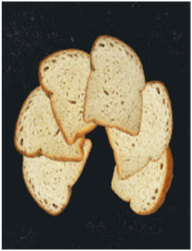 <Crick bread: Sliced bread> |
Grillon Le Pain Crickbread (2019) |
| HOPPA | - Hoppa is committed to advancing global food sustainability by offering a nutritious and eco-friendly alternative. Acknowledging the need to preserve natural resources and ensure adequate nourishment, the company aims to contribute to a more sustainable food system. - Hoppa cricket energy bars are formulated with sustainable protein and made exclusively from natural, wholesome ingredients, free from artificial additives or preservatives. Each bar provides 11 g of high-quality protein, containing all essential amino acids, omega fatty acids, vitamin B12, iron, calcium, potassium, and other vital micronutrients. With no added sugar and a low carbohydrate content, these bars offer a nutritious and health-conscious option. |
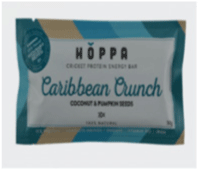 <Cricket energy bars> 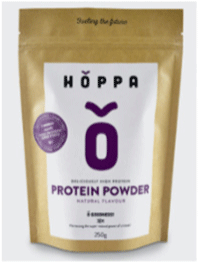 <Cricket protein powder> |
HOPPA (2018) |
| Jimini’s | - Jimini's has been introducing edible insects to consumers since 2012, aiming to encourage customers to enjoy these nutritious products and incorporate them into their diets. - Jimini's offers various insect-based products, including pasta, granola, and whole crickets seasoned with various flavors, making them enjoyable snacks. Additionally, their website offers a collection of recipes featuring their products, enabling consumers to easily incorporate insects into their meals. - They began using insects to promote environmental protection, with all products manufactured in France. The products are available for online purchase across France and throughout Europe. |
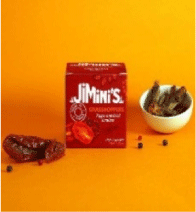 <Grasshoppers Pepper & dried tomatoes> 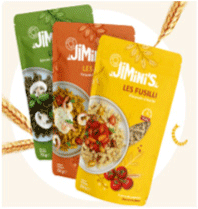 <Insect pasta> |
Jimini’s (2024) |
| Kriket | - In 2016, Michael—the founder of Kriket—visited a cricket farm, where he learned from farm engineers about the sustainability and nutritional benefits of crickets. Inspired by this insight, Michael and his sister, Anneline, developed the Kriket cricket energy bar. After a successful crowdfunding campaign, the Kriket bar was officially launched in Belgium in September 2018. - Since then, they have established numerous new collaborations, starting in Belgium and expanding internationally to Canada, Spain, and Lithuania. - They have launched several protein bars with different textures, flavors, and protein content, along with granola and cricket powder. |
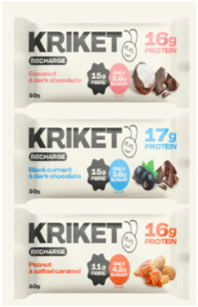 <High protein bars mix> 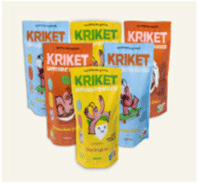 <Granola mix> |
Kriket (2021) |
| NutriBug | - NutriBug produces high-protein, premium insect powders, whole roasted insects, and other insect-infused foods for human consumption at its state-of-the-art production facility. The facility is certified in Good Hygiene Practices and Hazard Analysis and Critical Control Points. - Cricket protein Bars pack includes three new nutrient-dense protein bars made with all-natural ingredients. The bars are crafted using high-quality crickets raised on a 100% plant-based diet, sourced from carefully selected eco-friendly farms in tropical regions. - High-protein cricket powder is considered the next major superfood, and this may be the first pasta to incorporate. It provides high-quality protein with other essential vitamins and minerals, including iron, calcium, omega-3, and B12. |
 <Cricket protein bars> 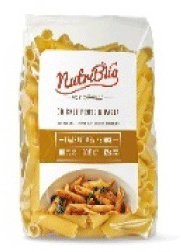 <Cricket protein pasta>  <Cricket protein capsules> |
NutriBug (2019) |
| Small Giants | - Small Giants offers insect-based snacks designed to introduce consumers to nutritious, sustainable, and environmentally friendly alternative proteins. Their aim is to normalize the consumption of insects as a widely accepted food source, even in Western cultures. To achieve this, they aim to attract the attention of consumers with incredibly tasty snacks, promoting the adoption of insect-based foods. - Taralli Di Grillo is an authentic Apulian taralli infused with cricket flour. Handcrafted by skilled artisans who specialize in taralli production daily, available in three varieties: onion, chili, or toasted wheat. A bold, crispy, and flavorful savory snack. - Cracker Bites combine flavorful, ultra-crunchy crackers made with cricket flour. Crickets are a highly sustainable superfood, rich in complete protein, vitamin B12, minerals, and dietary fiber. |
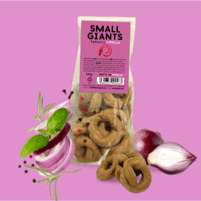 <Taralli Di Grillo>  <Cracker bites mix> 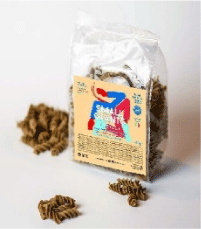 <Cricket proteine pasta> |
Small Giants (2025) |
| Ynsect | - Ynsect represents the first range of food ingredients in the world derived from insects, providing innovative solutions for the food industry. These products combine nutrition, sustainability, and consumer satisfaction, addressing health and environmental challenges. By incorporating insect-based ingredients, Ynsect contributes to a more resource-efficient and sustainable food system. - Mealworm Oil remains semi-solid at room temperature and features an excellent fatty acid composition with a 1:1:1 ratio of MUFA, PUFA, and SFA, respectively, with a slightly nutty flavor. Its unique composition and properties make it suitable for a wide variety of applications. |
 <Mealworm oil> 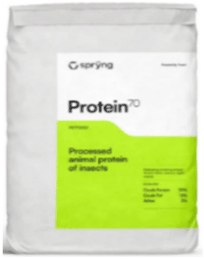 <Mealworm protein> |
Ynsect (2023) |
| Yumbug | - Yum Bug Smoky BBQ Cricket Tacos include 30% dried cricket powder, offering an exceptional amount of protein, high levels of omega-3 and omega-6 fatty acids, more vitamin B12 compared to that in red meat, and more calcium compared to that in milk. - The primary goal of their business is to introduce a new sustainable superfood in a delicious and familiar form. They prioritize sustainability at every stage, sourcing insects locally from Cambridge to minimize food miles and utilizing biodegradable packaging. They prepare several dishes using meat alternatives and can be adaptable to any specific requests as needed. |
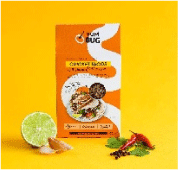 <Yum Bug Smoky BBQ Cricket Tacos> 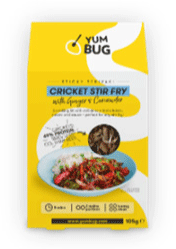 <Cricket stir fry> |
Yumbug (2024a); Yumbug (2024b) |
To replicate the taste, flavor, and texture of traditional livestock products, insect-based products are often formulated by combining plant-based proteins with insect-derived ingredients. Soy protein isolate (SPI)—a high-protein ingredient obtained by removing non-protein components such as fat, fiber, and carbohydrates, among others, from soybeans—is commonly used as a raw material in functional foods and dietary supplements (Liu, 2012). SPI is the most refined form of soybean extract and plays an important role in food processing owing to its functional and nutritional benefits. SPI is manufactured by removing fat and soluble carbohydrates from soybeans, followed by protein extraction using an alkaline solution, resulting in a highly purified form of SPI (Endres, 2001). This purification process increases protein purity, making SPI suitable for various food processing applications. SPI is widely utilized as an alternative protein, especially for consumers with cow milk protein allergies or lactose intolerance (Riaz, 2005).
SPI is a key raw material used to increase the protein content and maintain the nutritional balance of alternative protein products (Endres, 2001). SPI provides essential amino acids for vegetarians who do not consume animal protein and serves as a protein supplement in alternative protein products (Kyriakopoulou et al., 2019). Soy-derived protein is recognized for its potential to help prevent cardiovascular disease, lower blood cholesterol levels, and support muscle development (Messina and Messina, 2010). Consequently, SPI has become an important ingredient in the food processing industry and dietary supplements. Studies show that soy protein scores highly on biological value and protein digestibility-corrected amino acid score—key indicators of protein quality—highlighting its high digestibility and bioavailability (Young and Pellett, 1994). SPI is low in fat and calories but high in protein, making it an ideal component of weight management diets. It also plays an important role in maintaining and increasing muscle mass (Hoffman and Falvo, 2004). SPI provides sufficient amounts of essential amino acids necessary for muscle synthesis, supporting post-workout recovery (Hoffman and Falvo, 2004).
SPI is an important raw material in the production of plant-based protein products due to its high protein content and excellent functional properties (Endres, 2001; Riaz, 2005). They enhance the texture, mouthfeel, and nutritional properties of plant-based protein products (Kyriakopoulou et al., 2019). SPIs are widely used in plant-based protein products to replicate texture owing to their water-binding capability to form a gel (Fukushima, 2001). During processes such as heat treatment or high-pressure extrusion, SPIs can facilitate protein binding, forming a fibrous meat-like structure that provides consumers with a chew and texture similar to that of real meat (Kyriakopoulou et al., 2019). During this process, SPIs form strong intermolecular bonds, enhancing the physical stability of alternative protein products (Dekkers et al., 2018). SPIs are widely utilized in various alternative protein products for their excellent emulsification and water-holding capacity (Endres, 2001). SPI binds water and oil to form a stable emulsified structure, retaining moisture and fat to maintain the juiciness of the product, which is a key factor influencing the taste and texture of the product (Fukushima, 2001; Riaz, 2005). These emulsification and water retention properties make SPIs essential in formulating various alternative protein-based products such as hamburger patties, sausages, and nuggets (Kyriakopoulou et al., 2019). Smetana et al. (2018) developed an insect-based product using soy protein concentrate (69% protein, 12%–18% carbohydrates), soy fiber, and Alphitobius diaperinus protein concentrate (68% protein) through a high-moisture extrusion process. They reported that a meat-like texture could be maintained when up to 40% of A. diaperinus protein concentrate is mixed with 5%–10% soy fiber (dry matter), yielding meat analogs with a protein content of 25.0%–30.8%. Krawczyk et al. (2024) report that the lipid content and saturated fatty acids levels increase, while unsaturated fatty acids decrease when analog burgers are formulated with A. diaperinus protein. In sensory evaluation, burgers containing 5% insect protein received high accessibility scores, and the addition of insect protein did not result in significant textural differences.
In addition to traditional livestock products such as beef, pork, and chicken, researchers have also explored substituting milk with insect-derived ingredients. Tello et al. (2021) developed an insect-based milk alternative using T. molitor, water, ascorbic acid, T. molitor-derived fat, and sunflower lecithin. Their nutritional analysis revealed that the formation contains 1.19% crude protein, 5.76% fat, <1% carbohydrate, and 0.03% ash. They also reported that a 20% insect larvae content is expected to contribute 20% protein in the milk, but further research is needed to determine the effect of heat treatments such as pasteurization or homogenization, which may negatively affect the product by causing protein denaturation or reducing its emulsifying capacity. Mao et al. (2022) developed an insect-based milk alternative by formulating a Ca2+-enriched milk substitute using 4 wt% sunflower seed oil and 95 wt% pH-adjusted silkworm pupa soluble protein. Neves et al. (2024) incorporated black soldier fly (BSF) and drone brood powders as milk protein substitutes in fermented dairy products. They reported that the insect-based powders produced fermented dairy products with a physicochemical and microbiological composition comparable to those in conventional products, exhibiting nearly identical protein content but a higher fat content. However, they revealed that fermented dairy products containing BSF received low scores in sensory evaluations. The researchers report that relatively few studies have explored the use of insect-derived ingredients in producing milk and meat analogs, which are often combined with plant proteins rather than using insect ingredients. Although insects have long been consumed as food through methods such as stir- or deep-frying, research on their use as replacements for traditional livestock products remains in its early stages. The taste, flavor, or texture of insect-based products is not comparable to that of traditional livestock products.
Conclusion
The industrial production of edible insects is not a recent development, as insects have long been consumed as food worldwide. However, interest in them as an alternative to livestock products has grown significantly in recent years. The findings of this review indicate that the edible insect industry, aimed at supplementing or partially replacing traditional livestock products, is growing. The process has not achieved full-scale industrialization, and its effect on the traditional livestock market remains minimal at this time. It is expected that continuous product innovation, educational campaigns, and regulatory support can hasten the industrialization and commercialization of insect-based food products. The existence of insect-enriched products in the market suggests increasing demand and acceptance among consumers worldwide. However, research is still needed to improve sensory characteristics and production efficiency to ensure its sustainability and acceptance.

